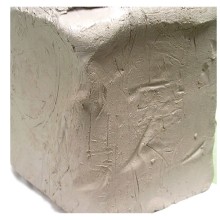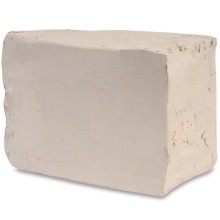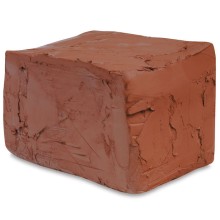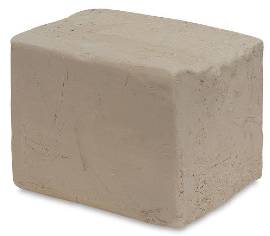Your cart is currently empty!
Best Pottery Clay for Beginners | Choosing the Right Clay
Published:
Last Updated:
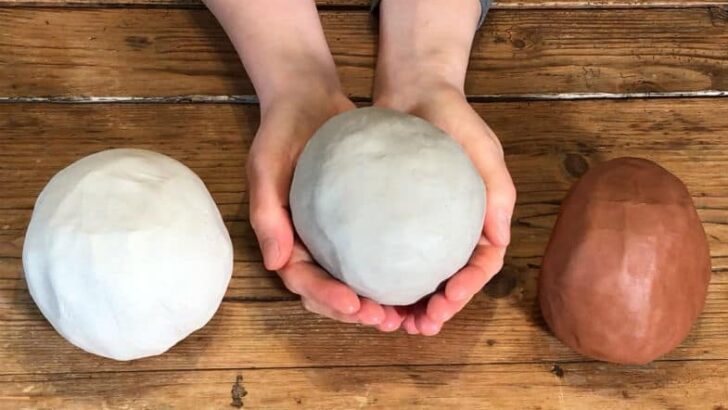
Affiliate Disclaimer
As an affiliate, we may earn a commission from qualifying purchases. We get commissions for purchases made through links on this website from Amazon and other third parties.
There are lots of types of clay for pottery and many different brands too. If you are new to pottery, this can feel confusing. Choosing clay is important because it can make your learning experience easier. This article includes some essential tips on choosing the best pottery clay for beginners. You can check out my video on that question right here too.
Stoneware clay with a fine grog is best for a beginner choosing clay. This is because it is cooperative and does what the potter wants. And it holds its form once shaped. It is versatile and can be used for throwing, hand-building, and modeling. Also, stoneware with fine grog is easy on the potter’s hands.
In a Hurry?
If you are in a rush and don’t have time to read this article, here are my top recommendations for choosing clay when you are a beginner.
Top pick
Buff Clay
This buff-colored stoneware clay by the Standard Company becomes cream-colored when fired. It’s strong, holds its shape, and is a great choice for beginners.
Good for Classrooms
White Art Clay
A gray low-fire pottery clay by Amaco that becomes white when it is fired. It’s good for hand-building, modeling, and wheel-throwing. Great for classrooms.
Best Red Clay
Red Clay
This red earthenware clay by Blick keeps its color after firing. It is smooth and easy to work with. Good for wheel-throwing or hand-building. Looks lovely when glazed.
A Beginner’s Guide to Choosing Clay
Let’s start with a broad overview of the different types of pottery clay that you can choose from.
There are three main groups of clay that most pottery clay will fall into. They are:
- Earthenware clay
- Stoneware clay
- Porcelain clay
There are other types of clay too, and I have written about those here. But for our purposes today, the main categories are earthenware, stoneware, and porcelain.
When you look on a pottery supplier’s website, under their clay section, they will normally categorize their clays into earthenware, stoneware, and porcelain.
If you are new to pottery this can feel baffling. To demystify these categories, let’s take a quick look at each of these types of clay in turn.
Earthenware Clay
Earthenware clay is that it is usually fired at a lower temperature than stoneware and porcelain. Firing is the process of baking the clay in a pottery kiln. Pottery is usually fired in at a temperature that ranges from 1832 F (1000C) to 2372 F (1300)
Different types of clay are called ‘clay bodies’ and different clay bodies need to be fired at different temperatures.
Earthenware clay needs to be fired at lower temperatures, so, it’s often called ‘low fire clay’.
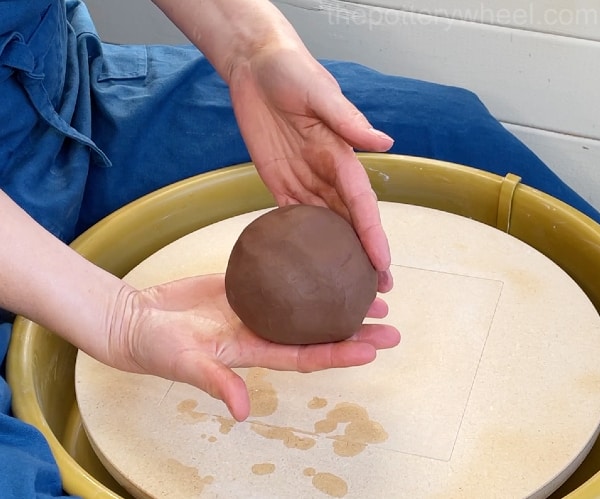
Low fire temperatures range between 1832-2135F (1000-1168C).
Even low fire temperatures are very hot compared to a normal domestic oven. Nevertheless, from a pottery perspective, these temperatures are quite low.
If you fire earthenware clay at higher temperatures than this, it can become very brittle and sometimes shatter, or it might melt in the kiln.
Properties of Earthenware Clay
One of the main properties of earthenware clay is that when it has been fired it is still a bit porous. This means that although it is ceramic and doesn’t dissolve in water, it will still absorb water if it becomes wet.
The reason that earthenware clay is still porous when it has been fired, is to do with its ingredients.
When pottery clay is fired, some of its ingredients melt and turn into a liquid glass. These are called glass formers. When the pottery kiln is hot, the liquid glass fills up gaps between the clay particles. When the kiln cools down, the liquid also glass cools and turns solid again.
If the clay contains a lot of glass formers then most of the gaps between the clay particles will have been filled up with glassy substances when it’s fired. This is called vitrification and it’s what makes the fired clay watertight.
However, if the clay doesn’t contain many glass-forming ingredients, the gaps between the clay particles don’t fill up completely. So, when the clay has been fired, it is still porous.
Earthenware clay doesn’t contain as many glass-forming ingredients as other types of clay. Although the earthenware becomes hard and ceramic in the kiln, it is still porous once it has been fired.
Because fired earthenware clay is still porous, it needs to be covered with pottery glaze. Pottery glaze is the glassy layer that protects the pottery and gives it a decorative finish too.
Stoneware Clay
Stoneware clay contains more glass-forming ingredients, and it can be fired at higher temperatures than earthenware. The temperature that stoneware clay is fired at ranges from 2160 -2380F (1180C-1300C). It’s often called mid or high-fire clay.
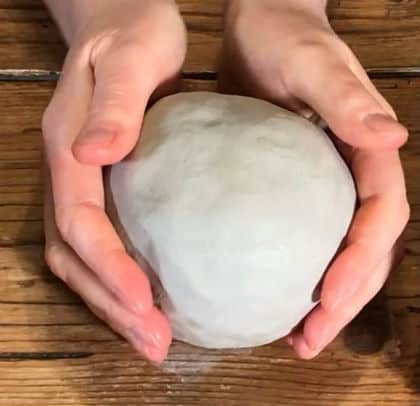
Properties of Stoneware Clay
When it is fired stoneware clay becomes harder and denser than earthenware clay. It also becomes non-porous. This means that stoneware clay doesn’t have to be glazed to make it watertight.
Another feature of stoneware clay is that when it’s fired, the surface of the clay and glaze mingle together. This mingling creates a layer between the clay and glaze which is made up of the two. It’s sometimes called a clay glaze interface.
The clay and the glaze mix together and then form a solid layer when the kiln has cooled. Because of this the glaze bonds to stoneware clay strongly, and won’t flake off.
This is different from earthenware clay. When earthenware clay is glazed, the glaze sits on top of the fired clay. The glaze is attached to the earthenware, but it isn’t bonded in the same way that glaze can mingle with stoneware clay.
Because of these differences, pottery made from stoneware clay is stronger, more durable, and tends to chip less than earthenware pottery.
Porcelain Clay
Porcelain clay is a purer type of pottery clay than earthenware and stoneware. It’s often very white or a creamy off-white color. This is because it contains fewer impurities such as iron. The main ingredient in porcelain is kaolin clay, which is a soft white clay (source).
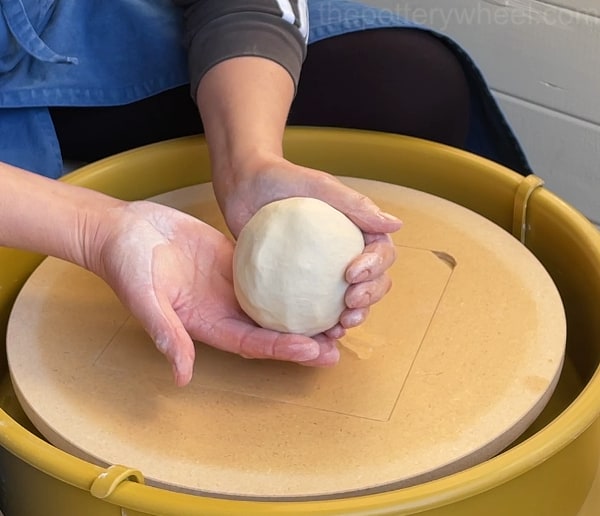
Properties of Porcelain Clay
Like stoneware, porcelain is normally fired at mid or high-fire temperatures. And like stoneware it becomes vitrified (non-porous) when it is fired to maturity. Being fired to maturity means that it has become as dense and strong as it can be.
Clay particles are called platelets, and porcelain clay particles are very small. There are more clay platelets in porcelain per square inch than in stoneware and earthenware.
The result of this is that porcelain has a very smooth finish. Also, because there is less space between porcelain particles, the clay can be pulled and stretched more than other types of clay. So, porcelain clay can be made into very thin forms. When it is thin and has been fired, porcelain clay can have a translucent glassy look.
How to Choose the Best Clay for Beginners
From that brief overview of the three main types of clay, you may already have an idea of the kind of clay you would like to use.
But before you make your choice, it’s helpful to ask yourself a few questions about what you need from your clay. This will help you make the right choice and stop you from wasting time and money on the wrong clay body.
Here are some factors you need to consider:
- Do you plan to fire your pottery?
- How do you want to use the clay?
- What is the clay like to work with?
- What do you want your pottery to look like?
- Firing Temperatures – what temperature are you going to fire at?
- Do you want to make decorative pieces or do you want to use them?
Each of the questions above is important when you are choosing clay. Let’s take a look at each of them in turn to see why they matter. And consider which clay is best for you depending on your answers.
1) Choosing Clay – Do You Plan to Fire Your Pottery?
One of the big differences between earthenware, stoneware, and porcelain is how they are fired, and what they are like when they are fired. But you may not want or need to fire your pottery.
If you are making pieces that are going to be decorative, or if you don’t plan to use your pottery for food and drink, then buying some air dry clay might suit your needs.
Air dry clay, as the name suggests, is clay that hardens when it is allowed to dry in the open air. It’s sometimes called “self-hardening clay”. There are lots of different types of air dry clay, and they each have their own qualities.
Some air dry clay, like Crayola, is very white, light, and easy to mold, but it can’t be used on a pottery wheel.
Other types of air dry clay are regular pottery clay, such as earthenware that has been blended with extra fiber. The fiber is usually paper or nylon.
These fibers give the clay extra strength when it dries so that it doesn’t crumble and break as easily as dry unfired pottery clay. The good thing about this kind of air dry clay is that it can be used for hand-building or wheel-throwing.
Also, usually, air dry clay that is reinforced with fibers can often be fired in a kiln too. So, you have the option to air dry or kiln fire. Here is a good example of self-hardening natural pottery clay.
Air-Dry / Low Fire Clay
Air dry clay can be decorated with regular paints, and can the colors can be sealed with varnish or sealant. However, because it hasn’t been fired, it doesn’t turn into ceramic pottery.
Also, air dry clay can’t be used for objects that are intended for food and drink. They are not food-safe or watertight. You can read more about air dry clay and food safety here.
Pottery Clay or Air Dry Clay? Which is Best?
Perhaps you don’t want to fire your pots, or maybe you want to make sculptures that don’t need to be fired. In this case, air dry clay might suit you well.
Also, if you don’t have access to a kiln, and you want to practice your pottery skills, air dry clay can be a good starting point.
But if you want to make pottery that is reliably watertight, or that can be used for food and drink then you need to use pottery clay. The term pottery clay is usually used to refer to clay that can be fired in a kiln, like earthenware, stoneware, or porcelain.
Don’t worry if you don’t own a kiln. There are lots of places that have kilns that will fire your pottery for you. I’ve put together a handy list of the types of places and organizations that often offer a kiln firing service. You can check that out here.
2) Choosing Clay – How Do You Want to Use the Clay?
Another factor to consider when you are choosing your clay is how you want to make your pottery.
Do you want to hand build with the clay, or are you looking for clay for your pottery wheel? Are you making tiny refined figurines? Or do you want to make great big planters for your garden?
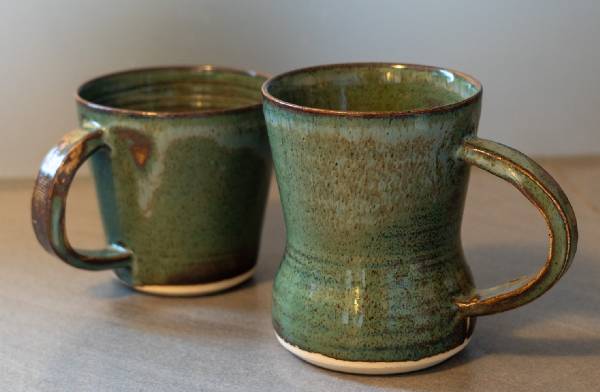
Different types of clay are best suited to different ways of making. Clay manufacturers will usually state in the description of the clay how the clay is best used.
For example, if you read the product details on a listed clay, it may say that it is ideal for hand building or wheel throwing. Equally, it may state that the clay has a lot of texture and grit, and is easier to use if you are hand building. Check out the manufacturer’s description to see their recommended uses.
This brings us to the next factor to consider, which is what the clay is like to use. Let’s take a look at that now.
3) Choosing Clay – What is the Clay Like to Work With?
For beginners, it’s best to find a clay that is easier to work with. Different clay bodies feel different to work with. Some are easier than others.
If you are someone who likes a challenge then using an easier clay body may not be a priority for you. However, when you are a beginner with clay, you are learning a lot of new skills. You can make the experience a bit easier by choosing a clay that is easy to use.
Here are some properties of clay that affect how easy it is to use:
Plasticity
In pottery, the term plasticity is not referring the clay that’s made out of plastic. Instead, it refers to how workable the clay is. Plastic clay is relatively soft and malleable. It also keeps the shape that you give it when you squeeze, pinch, pull, or bend it.
Plastic clay does not return to its original shape once you have stopped applying pressure to it. In that sense, plastic clay is not elastic. Clay plasticity is on a spectrum, with some clay being more plastic than others.
The best clay for beginners is quite plastic because you don’t have to work so hard to get the clay to do what you want. So which clay bodies are more plastic than others?
Is Earthenware Clay Plastic?
Earthenware clay is very plastic and it is therefore easy to work with. It is a good pottery wheel clay and can be used for throwing. But equally, it is good for hand building, and sculpting because it’s malleable and keeps its shape.
Because it is plastic, Earthenware does not need a lot of water to be added whilst you are working. As such, it is quite forgiving for beginners.
A clay that needs a lot of water to stay workable will tend to go soft quickly and can collapse. This is not a problem that you will have so much with earthenware clay.
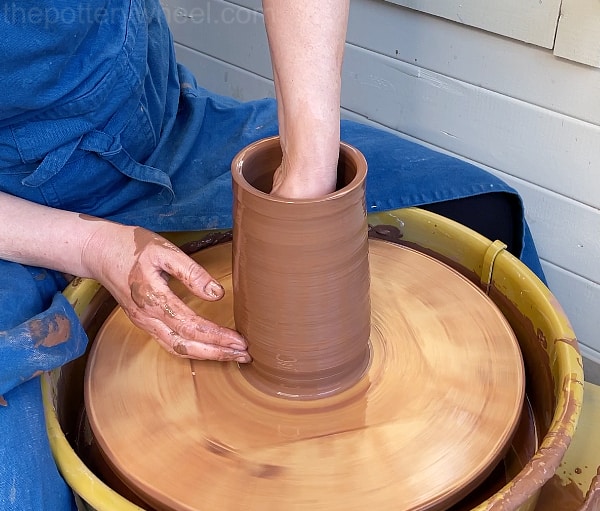
Is Stoneware Clay Plastic?
Broadly speaking, stoneware clay is quite plastic and can be used for wheel throwing, hand-building, and sculpting.
However, there are lots of different types of stoneware clay, and some are better for some tasks rather than others. Check to see if the manufacturer describes the clay as being plastic.
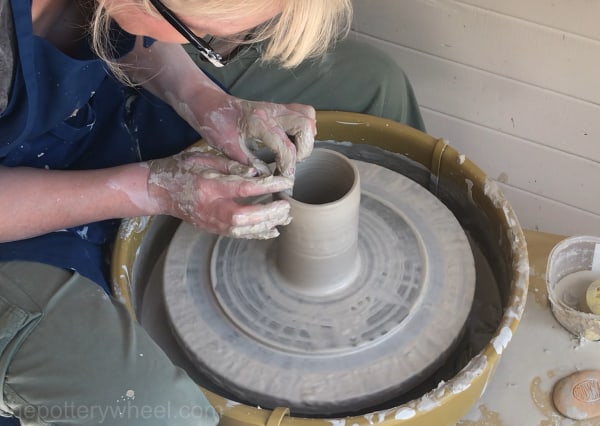
Is Porcelain Clay Plastic?
Porcelain clay is not very plastic, which means it’s harder to shape and form. As mentioned earlier, porcelain clay is made of smaller finer clay particles and will stretch and pull further than other clays.
However, porcelain clay has more of a thixotropic feel. “Thixotropic” means that when it is being handled and worked, the clay becomes soft and a bit floppy, but when it’s left to rest it stiffens up again. It’s quite a strange feeling to handle thixotropic clay and can take a bit of getting used to.
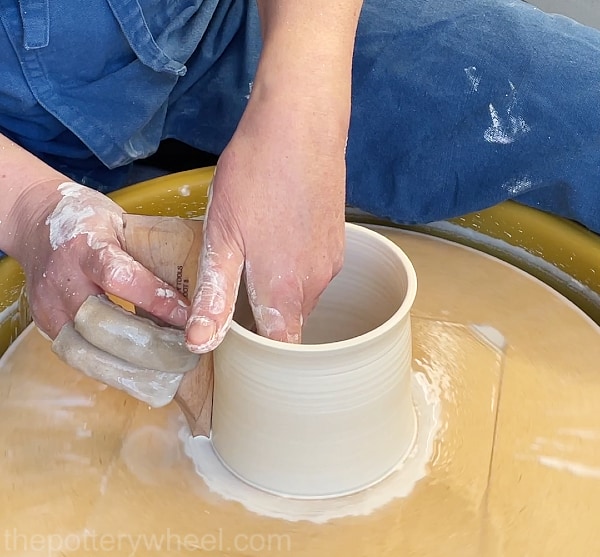
Water Absorption – Does the Clay Need a Lot of Water?
Some clay bodies are thirstier than others. It may sound strange to talk about clay being thirsty, but some clays indeed need more water to work with than others.
You will find as you handle different types of clay that some will dry out and drag on your hands and fingers more quickly than others. To keep the clay smooth, you need to add more water.
Porcelain is a good example of a thirsty clay. It dries out quickly as you work and needs extra water.
This is fine if you work quickly. But, when you are a beginner, you will probably be working a bit more slowly. For example, it will take you longer to center the clay on the wheel. You need to add more water to keep working. As more water is added the clay becomes softer and porcelain can become water-logged and collapse.
By contrast, earthenware and stoneware clay usually don’t need quite so much water to stay workable. As stated above, there are different brands of earthenware and stoneware and some will absorb more water than others.
One suggestion is to go for a brand of clay that is described as being good for schools. Clay that is used in schools is aimed at beginners and is often quite easy to handle.
Strength – How Strong is the Clay?
Although plastic clay will have some strength, strength, and plasticity in clay are not the same thing.
A clay’s strength refers, in part, to how much weight it can support. For example, if you are making a large piece, the clay needs to be quite strong. If it doesn’t have enough strength it will collapse under the weight of itself.
One way that clay is made stronger is by adding something called grog. Grog is a granular or gritty material mixed in with clay to make it easier to use. It is often added to the clay by the manufacturer, but it can be added by you when you are at home.
Grog is sometimes made from clay that has already been fired and ground up into small pieces. It has the advantage of helping the clay dry without cracking and reduces the amount the clay shrinks when it’s fired. You can learn more about the benefits of using grogged clay here.
Another feature of grog is that it gives the clay texture. We will look at the important feature of the clay’s texture now.
4) What Do You Want Your Pottery to Look Like?
The clay that you use can make a big difference to how your pottery looks once it’s been fired. Here are some of the ways that pottery clay can look different…
Texture
Some clay has a very smooth texture, other clay looks grainy and rough. Both can look great and it’s a matter of personal preference for you which one you like more.
Grainy, gritty clay can have an organic rustic charm. Clay that contains grog can have a grainy look and feel. Grains of grog come in different sizes. Some grog is ground up to a fine powder and the clay will still look quite smooth.
But grog can also be quite large and gritty, and this will give the clay a “toothy” texture. It’s worth noting that grog also changes the way it feels to work with clay. Clay that contains a rough grog can feel quite tough on the hands.
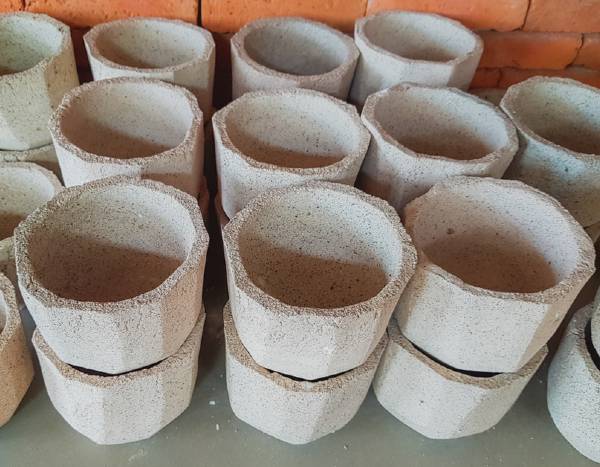
If you are hand-building with grogged clay, the rough texture isn’t so much of an issue. But if you are throwing with grogged clay, it can feel like sandpaper beneath your hands.
Very gritty clay isn’t ideal for beginners because it takes longer to center the clay. As you throw, the smaller finer particles of clay are washed away. This leaves behind the larger gritty particles of grog which feel tough on the hands.
Clay Color
Pottery clay comes in a range of colors. Earthenware clay can be white, tan, yellow, buff, brown, or red. Most red-orange clay like terracotta is earthenware clay, although some higher-fire stoneware clay can also have a nice red color too.
Stoneware clay also comes in a range of colors including white, cream, buff, brown, red, and even black. Some stoneware clays are made to have a gorgeous toasted finish when they have been fired or have a flecked finish.
Porcelain clay is usually lighter in color. Generally speaking, porcelain is either white, cream-colored, or off-white.
Different Pottery Glazes
Different types of clay need different types of glazes. Low-fire earthenware clay needs to be glazed with low-fire earthenware glazes. Equally, mid-to-high-fire clay needs to be fired with mid-to-high-fire glaze.
At first glance, this sounds complicated. However, in short, you just need to make sure that the glaze you want to use is supposed to be fired at the same temperature as the clay you are using.
As with clay bodies, pottery suppliers will usually divide their glazes into earthenware and stoneware glazes. Just be sure to choose a glaze from the right category. You can read more about what happens if you use the wrong type of glaze on your clay body here.
Earthenware and stoneware glazes can look quite different. Glazes designed for earthenware clay are often brighter colors and have a shiny glossy finish. This is partly because earthenware clay is fired at lower temperatures, and bright colors survive better in lower temperatures.
Stoneware glazes tend to come in a more organic, earthier range of colors. Some glazes are quite static when they are fired, meaning they don’t move about. Other glazes flow when they are fired, and look more liquid when they come out of the kiln. If you want to know more about choosing the right glaze, you can check out my beginner’s guide to glazing pottery clay here.
5) What Temperature Are You Going to Fire At?
If you are using pottery clay that needs to be fired in a kiln, you need to know what temperature the kiln goes to.
Will the pottery be fired at earthenware or stoneware temperatures? If you are getting your pottery fired by a pottery firing service, check with them what temperature they fire at.
Some places can fire at earthenware or stoneware temperatures. If that’s the case, then you can use either earthenware or stoneware clay. But if they only fire at either earthenware or stoneware, you need to use clay that is suitable for their firing schedule.
For example, if they fire to earthenware temperatures, you need to use earthenware clay. Potters often talk about firing pottery in terms of “cones”. The cone system refers to firing temperatures.
Earthenware firing temperatures are usually cone 04 or 06, whereas stoneware and porcelain firing temperatures can be anything from cone 5-10. You can read more about pottery cones here.
Don’t worry if someone starts talking to you about cones in a way that sounds baffling. Just explain that you are new and you need to know whether to use earthenware, stoneware, or porcelain.
Most potters are extremely helpful and everyone remembers what it’s like to be starting out. They will advise you about what clay body to use if you want to fire in their kiln.
Temperature Firing Ranges
| Firing Range | F | C | Cone Range |
|---|---|---|---|
| Low Fire Mid Fire High Fire | 1850-2135F 2160-2290F 2315-2380F | 1010-1168C 1182-1254C 1268-1304C | Cone 06-3 Cone 4-7 Cone 8-10 |
Most likely as a beginner, you won’t have your own kiln. It’s a good idea to find out where you are going to be firing your work.
Ask them what temperature their kiln fires to. This will determine what kind of clay you can use.
6) What Do You Want to Use Your Pottery For?
Are you going to be making dinner plates, mugs, vases, pencil holders, wall plaques? It’s a good idea to think about how you are going to use your pottery when you are choosing your clay.
Usually, pottery that is made for eating and drinking suffers from more knocks and bumps. General handling and everyday washing can be tough on ceramics.
You can use earthenware clay to make functional pottery like plates and mugs. However, because it’s not as strong or dense as stoneware or porcelain clay, it’s more prone to chips and cracks.
My feeling is that if you are going to make pottery that you want to use every day, you are better off using stoneware clay. It will survive the rigors of everyday handling and the heat of the dishwasher better than earthenware.
However, if you plan to make something that won’t be handled as much then choosing earthenware clay would be fine.
If you want to make an earthenware vase remember that fired earthenware is still porous. So the surface that comes into contact with water needs to be glazed well to make the pottery watertight.
As mentioned earlier on, stoneware and porcelain clay are denser and harder when they have been fired than earthenware clay.
The Pros and Cons of Earthenware, Stoneware & Porcelain
Here is a handy overview of your options to help you when you are choosing your clay which is the best one for you.
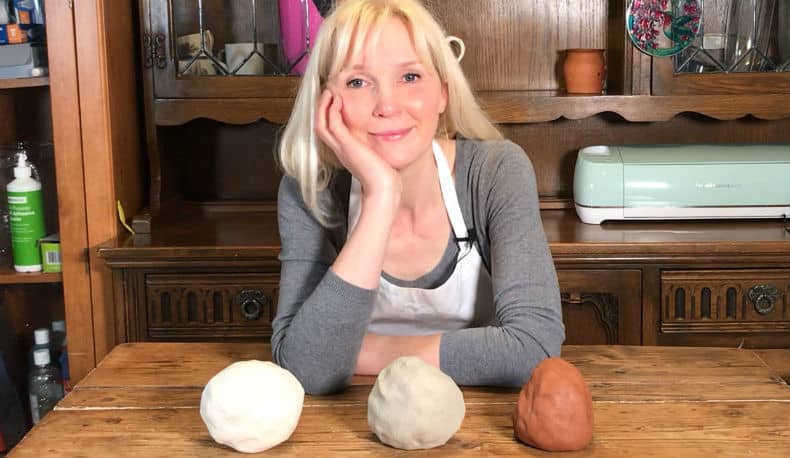
Earthenware Clay
Pros
Cons
Stoneware Clay
Pros
Cons
Porcelain Clay
Pros
Cons
Final Thoughts on Choosing Clay
I mentioned right at the start of this article, that I think stoneware clay is a great pottery clay for beginners. You can see in the list of pros and cons above that I was struggling to think of the cons for stoneware!
My preferred choice of clay is stoneware, so I’m a bit biased. That being said, earthenware can also be a great starting place. Porcelain is a bit trickier and I’d suggest leaving porcelain until you have a good feel for the clay. But if you like a challenge and you want to make thin white forms, then choosing porcelain clay may be right for you.

